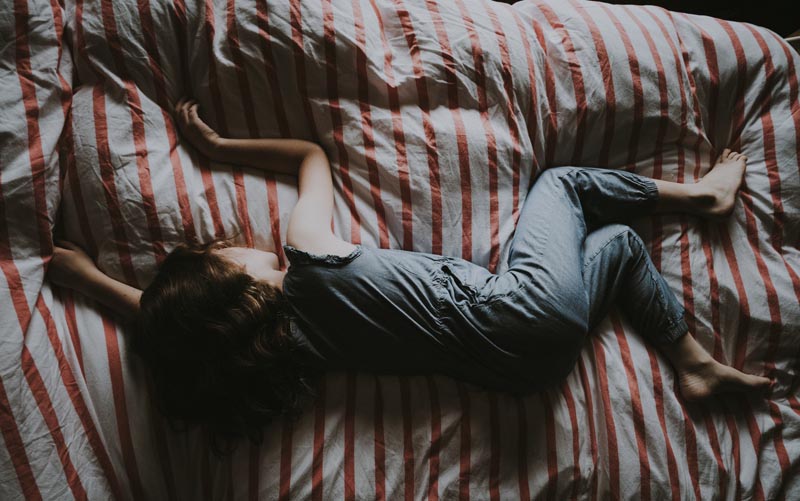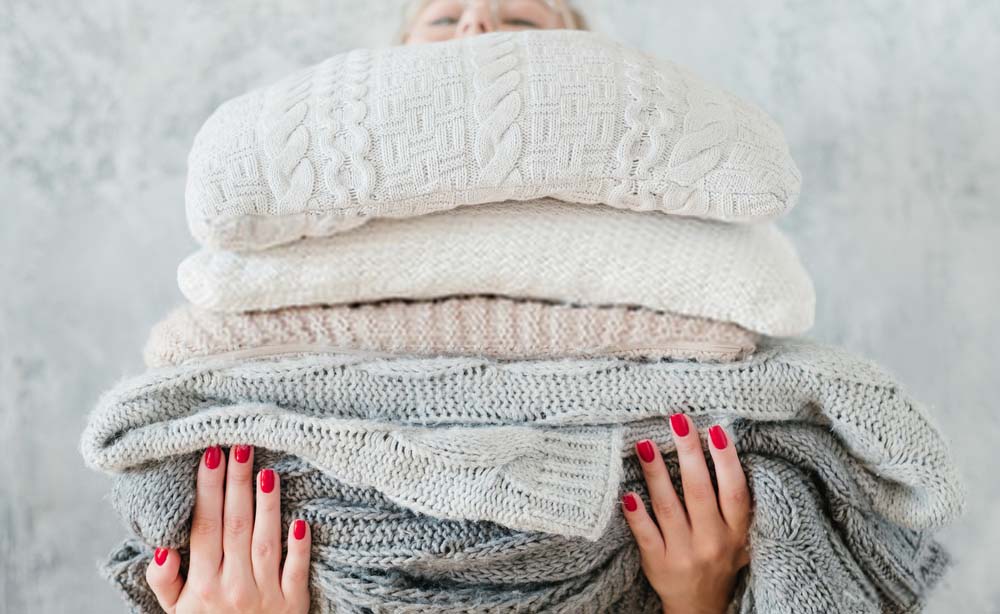If you have trouble sleeping you might be interested to know that a weighted blanket can help you. The deep pressure that the blanket gives can have a calming effect on the body. A blanket such as this can, therefore, help those who suffer from PTSD, depression, anxiety, autism, and ADHD.
When it comes to using a weighted blanket, it can be used in place of your comforter. However, if you are happy to continue to use a comforter you can. Just make sure that most of your body is covered from your chest down to your legs.
How to Use a Weighted Blanket?
Simply cover your legs and your neck down to ensure that you benefit the most. Make sure your legs are covered but don’t worry if your feet aren’t. The most important thing is that the blanket’s weight is evenly distributed.
How Weighted Blankets Work?

A weighted blanket works by using pressure. This pressure helps your body to understand where your arms, legs, and other parts of your body are. Your brain likes this and it also likes the pressure that the blanket has. The weight of the blanket is not too much but it’s definitely there. You could also compare it to the pressure/weight a baby feels when it’s being swaddled.
Using Deep-Touch Pressure to Soothe You
Deep-touch pressure is used to calm the arousal that’s felt when you’re anxious, for example. The pressure works to stimulate the release of dopamine and serotonin, ensuring that you feel much more relaxed. Some research has suggested that parts of your body’s limbic system are calmed thanks to the deep pressure. This makes them ideal for those who have sensory-processing disorders.
How Heavy Your Weighted Blanket Should be
Your new weighted blanket should weigh approximately 10% of your body weight. However, it’s entirely up to you how heavy the blanket is. Some people might prefer the heaviest weighted blanket available whereas others might love something lighter.
If you are purchasing a weighted blanket for a child please make sure you use the following guidelines: the blanket should weigh no more than 10% of the child’s weight plus 1 pound. This will ensure your child isn’t likely to feel stuck under the blanket.
Do not use a weighted blanket to cover babies or toddlers!!!
Washing a Weighted Blanket

When it comes to washing a weighted blanket you should not have much trouble. Most weighted blankets can be put in the washer and the dryer. You will have to make sure that you wash it in cool or warm water as per the instructions. When it comes to drying your blanket you can place it in the dryer and dry it on low heat. Please make sure you always follow the manufacturer’s instructions.
Helping People with Autism
A weighted blanket can help those with autism as it helps the brain to produce more serotonin. This is a feel-good hormone that can help you to sleep. When someone with autism uses a weighted blanket they are likely to feel much more secure.
Helping College Students
Heading to college for the first time can be quite an anxiety-provoking experience. A weighted blanket can help college students to feel much calmer, thereby reducing their anxiety.
Helping Veterans
Veterans with Post Traumatic Stress Disorder may find that they sleep better, have fewer nightmares, and feel much more relaxed. While a weighted blanket might not be the solution to PTSD, it can ensure veterans get a better night’s sleep and feel more relaxed.
Weighted blankets can prove to be very useful to those who are anxious. It can also help people who suffer from a wide range of conditions. Used correctly, a weighted blanket can help you to sleep much better and boost the levels of feel-good chemicals in your brain.

